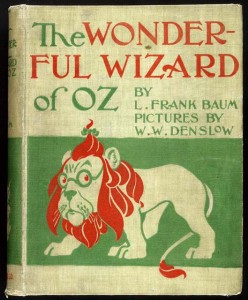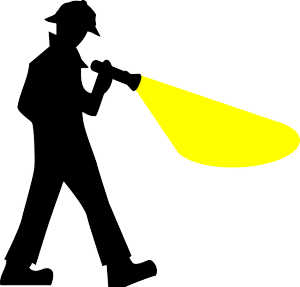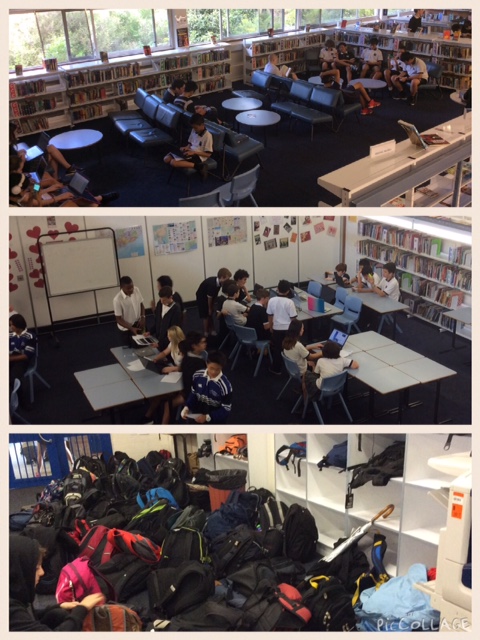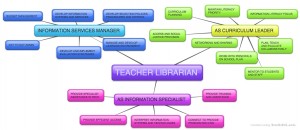Collaboration
Key elements of children’s literature
- Literature written, usually by adults, and widely read by children and adolescents.
- Narrative voice designed to target an audience of children or young adults. Developmentally appropriate – reading level, vocabulary, maturity level and cognitive pitch.
- Can include novels, poetry (lyrical style), drama, biographies, autobiographies, short stories and essays.
- Can be read, performed or incorporate multimodal delivery.
- Can be in different formats such as picture books, novels, bridging books, ebooks and digital books – using a wide variety of literary devices and technology tools.
- Often written to explore a moral concept, cultural theme or introduce new ideas.
- Themes are often fanciful – not confined by reality – inspiration for the imagination – empowerment
- Often influenced by how childhood is perceived by society or the dominant culture – therefore it can depict the prevailing times and attitudes.
- Holds a memory place in people’s minds – connect adults to their childhood and the books that helped to shape them or connect them to specific memories.
- Allows children to explore different cultures, times and ideas.
- Influenced by the stakeholders – the industry of children’s literature. Authors, illustrators, editors, publishers, reviewers, critics, teachers, parents… and the audience i.e. children
- Is linked to how we view childhood – can provide insight into historical approaches to children.
- Exposure should be diverse and high quality – not prescribed by adults.
- No guarantees about engagement for particular children – one child may engage completely while another will not engage at all. e.g. Harry Potter obsession
- Should never forget to aim for being read for pleasure and enjoyment by children.
- Tool for learning about literary devices.
- Means to explore identity – to learn from – to discover.
- Children’s literature can often be seen to have to be approved by adults for children to be able to access it… until they decide to enter a library on their own.
Edit: December 6, 2015
After reflecting on these key elements, and trying to understand the impact of children’s books being written by adults, then the importance of the role of narrative and storytelling as ways for children to make sense of their world becomes clear. Attempting to understand the role of books, and other things, as cultural tools – reflecting the differences in ‘childhood’ for those growing up in the USA vs Afghanistan (an exaggerated view). It becomes so important to me to ensure that when we choose what stories to give our children access to, that we take into consideration the kind of childhood that is revealed in those stories so that the reader can relate to the stories (Smidt, 2012). How we then intertwine access to children’s literature that is deemed to be “important” for educational purposes does provide the Teacher Librarian some challenges when collaborating with teaching staff. There is much to consider here… with the other persistent challenge continuing – how does the Teacher Librarian get involved in these decisions regarding providing access to books across the curriculum outcomes?
References:
Smidt, S. (2012) Reading the world – what young children learn from literature Trentham Books Ltd : Stoke on Trent
“I know all that. Tell me how!”
Having worked in schools, in various roles, more on than off since 1982, I’ve comfortably assumed that I know quite a deal about leadership in schools… but schools have changed, are changing still, and I am changing too as I participate in the new challenge of the role of Teacher Librarian. This opportunity now, courtesy of the MEd(TL), to learn about the theory behind the practice of leadership, has given me pause, and an opportunity to reflect – both on the leadership I have witnessed in schools over the years, and on my own participation in it.
My viewpoint now is that when I started in schools, leadership was conceptualised as the responsibility of a small subset of the staff of a school. Certainly there was the sense that the role of Principal or Headmaster/Headmistress was exclusive in the perception of a well managed school – in essence there was a real sense that leadership lived or died in a school dependent on the personality characteristics and practices of that single individual. When I look back at that approach now, I realise this was quite a comfortable perception for everyone other than the Principal. Thirty years later, my thoughts now are that leadership in schools is much more than the role of the Principal – trouble being that this may still put me in conflict with those staff who continue to perpetuate this notion of effective school leadership being dependent on that single individual at the head… and I don’t think it is that simple anymore at all.
As this course has presented readings covering leadership theory and the changes that have occurred over the same time span that I have been teaching in schools, so I see how my own view of leadership and participation in it, have developed over these decades. Ideas about “natural born leaders” have floated around during that time, but I have come to believe that leadership is as much about innate characteristics as it is about learning how to lead… and being given opportunities to practice those skills. The concepts of Distributed Leadership and Transformational Leadership are of particular interest at my career stage and I look forward to a deeper understanding of these theories.
This year, as I started a new adventure in a NSW Department of Education School Library, circumstances have already provided a series of challenges and opportunities to participate as Teacher Librarian as leader, and also to observe other staff in various positions, participate in leadership development – regardless of their named position.
The ASLA guidelines for excellence in Teacher Librarianship provide a framework for establishing the role and taking a place in the leadership in my school. These give a strong focus as I look for opportunities to:
actively engage in school leadership and participate in key committees
promote and nurture a ‘whole school focus’ on information literacy policy and implementation
build and foster collaborative teams within school and professional communities
provide effective and transformational leadership to school library and information services staff
As it happens, my new school has also been in particular need of leadership in IT management and ICT integration, and these areas within my skill set have been utilised within my new situation – providing a bridge for other projects and collaborative practices. Recently I have been approached by the Head Teacher of the English Faculty to consult on plans for establishing a Literacy Committee for our school in 2016 and I look forward to those challenges.
As this course expands my knowledge of leadership practice, I look forward to increasing my availability to participate in an essential Servant Leadership opportunity within my school as their Teacher Librarian.
Bibliography:
ASLA (2005) Standards of professional excellence for Teacher Librarians. 1st Ed. [PDF] Australian School Library Association. Available at: http://www.asla.org.au/policy/standards.aspx
My tribe is here somewhere…
As we return to begin Semester 2 of this MEd(TL) journey, I’ve had an opportunity to reflect on the learning that happened in Semester 1… and I say “happened” because it describes how I feel when I think about the first two subjects that I completed for this course – from the point of view of delivery, the learning “happened” to me rather than having a sense of participating in it or nurturing/developing the knowledge transfer process. The nature of Distance Education in this MEd(TL) model is that it is a bit like a MOOC (and I know what a MOOC is like – from the point of view of a participant)… too many people participating in it so the forums become chaotic dumping grounds and the assessment train must move relentlessly forward.
There is no sense of it being a personal learning journey – more like a cattle truck – so I found myself in need of a side stream in this fast flowing river… rather than just allow myself to be swept ahead by the fast flowing bustle of a large student cohort, and stressed by the busy-ness of the university’s online forum model.
My solution came in the form of what is essentially a Study Group – a “tribe” to collaborate with and nurture each other’s learning, and support each other in the challenges that are inevitable when trying to juggle life and study while working in teaching positions of varying levels of responsibility. It didn’t take us long to find each other and establish a closed group on Facebook – amongst a couple of other groups trying to achieve the same model of support.
The nature of the learning, in a Masters of Education focusing on Teacher Librarianship, is partly to learn about the complicated circumstance of the job in schools. Essentially it is a role that needs a Master Builder because its description relies on the input of school executive and requires a great deal of self knowledge and just plain “chutzpah”! Establishing a high quality PLN (Professional Learning Network) becomes a survival tool of the highest importance. Teacher Librarianship is about innovation and change – get rid of the Fixed Mindset and open up to new challenges, new collaborations, new connections – ever TL needs a support network.
While the MEd(TL) is an industry accredited course to cover all library circumstances, my employer, the NSW Department of Education, has a Library Policy which states that each school’s Teacher Librarian is:
- involved in the provision of the information-related resources integral to the planning, implementation and evaluation of the curriculum of the school
and also
- Teacher-librarians provide students with opportunities to develop information skills and to use these skills competently and with confidence for lifelong learning.
This semester has also coincided with the introduction of the Professional Development Framework for NSW DoE teachers and identifying the challenges of self-empowerment to fulfil the policy roles stated has already identified some obstacles faced in the role of the Teacher Librarian.
In first semester, in my last assignment for ETL401: Introduction to Teacher Librarianship, the feedback provided included a criticism of my reflection on the learning in the course because I included a focus on how I have applied the learning to the role I am actually undertaking in my school. Frankly I find that a disrespectful criticism since being able to apply the learning to my role is 100% the reason for me facing the challenge of an MEd(TL) by Distance Education. As teachers we are constantly admonished that the learning should be applicable to the needs of our students… and that will continue to be my focus for the remainder of this course. This is not mere academic pursuit for me… I know that teaching is my passion… and getting better at it is my job.
Open source image located at: https://pixabay.com/p-156961/?no_redirect
ETL401 The Critical Synthesis challenge
My challenge here is to achieve a “critical synthesis” and assess my progress in understanding the role of the Teacher Librarian in schools. To be perfectly frank, I don’t know that I am yet capable of fully realising that goal. This course has expanded my view of the role of the Teacher Librarian in schools, increased my knowledge of the expectations and details, but has also found me acquiring scepticism that the role will ever truly be appreciated in schools, and a realisation that the frustration levels involved may yet overwhelm me.
My career as a teacher has already spanned three decades and provided me with experiences in a wide variety of education systems and pedagogical approaches – yet I find myself under pressure to be able to fulfil the TL role. Achieving success at interview and being offered a placement as TL in a NSW DEC school was a significant challenge. I bring to this role an acceptance of the change process, a deep love of literature and information literacy, expertise in the vast array of tools of the 21st Century educator, a background in database management, and training in school leadership… and yet I find myself in a school where the role of the Teacher Librarian has a long, dark shadow and significant baggage, and I wonder if I have sufficient resilience to meet the challenge of realising the potential of the TL role. Thankfully ETL401 has provided some clarity for me but TLs must work within the staffing structure of their school and I am yet to be convinced that it is possible to establish a shift in how other staff perceive the role, or accept a change that allows change.
Since first being offered, by a secondary Principal, an opportunity to act as Teacher Librarian in 2013, and another position in 2014, I have been fortunate indeed to connect and collaborate with a large group of Teacher Librarians serving in a wide range of schools – both in NSW and internationally. I have listened and read about the issues they face – the challenges of advocacy and accreditation, the importance of “Teacher” in TL, the treatment by school executives, the budget constraints, the push for change of usage and design of Library spaces and so on, and I began this course with what I realise now was a chaotic view of the Teacher Librarian profile in schools.
My description of the role as a “Project Manager’s nightmare” (Hogg, 2015a) was an accurate assessment of how I saw the role at the beginning of this semester. Thankfully some clarity has been achieved as the course has progressed, and especially through exposure to and discussion about some of the support literature that provides greater definition of the TL role. The ASLA website and materials have been significantly useful in this pursuit of clarity and their analysis of “What is a teacher librarian?” (Asla.org.au, 2014) has provided me with a framework as a foundation for the development of a Strategic Plan for my new role. What I described as the “ubiquitous and indispensable” (Hogg, 2015a) features of the TL role are in fact examples of critical and creative thinking – two important facets of what the Australian Curriculum describes as General Capabilities of the 21st century (Australian Curriculum and Assessment Reporting Authority [ACARA], 2014) and are a foundation for the role of TL in schools.
This course has also highlighted the importance of the role of the School Principal in achieving a shift in perception amongst teaching staff regarding the use of the Library and the role of the TL. The course forums gave many examples of how Principals and TLs interact in schools. As I noted in my blog post, the literature has shown me that “Supportive principals also communicate an understanding of the value of the library program and make Information Literacy an agenda item in school planning” (Hogg, 2015b) and I recognise that I have much more “collaboration homework” to do (Bush, 2003) in order to achieve a supportive relationship, and the resulting access to teaching staff that can be made available in the collaborative process.
Most importantly, though, I come away from this course with a much more detailed understanding of the importance of Information Literacy – what it looks like and how it can be explicitly taught in schools (Hogg, 2015c). In addition, through the Interact2 forums, completion of assignments, and connection and collaboration with other members of my MEd(TL) student cohort (especially through connecting via Facebook) – I have come to understand the importance of the Information Literacy models and the process of inquiry, and look forward to creating opportunities for students at my school to improve their Information Literacy and be better prepared for the challenges of lifelong learning in this information dense landscape of the 21st Century.
Information literate students, who are learning how to learn and using a 21st Century skill set, should be the focus of the TL role. Teacher Librarians have a pivotal role in teaching their students how to broaden their literacy horizons and love of literature, how to have a passion for learning and how to the acquire the metacognitive processes involved – constructivism in action. Essentially this means that TLs are teaching students to access, process, organise, create, and present their learning in meaningful, purposeful ways (Abilock, 2004). For me the fog has cleared and the challenge is revealed – I will continue to learn how to adapt and change as my participation in the role of Teacher Librarian focuses on the students of my school and the learning challenges they face, in a world where success, reading and Information Literacy are inexorably linked.
While I remain sceptical… I will face the hurdles with renewed vigour, now that the challenge has been well articulated.
[click image to enlarge]
[Images in this post created by D.Hogg 2015]
References:
Abilock, D. (2004). Building Blocks of Research: Overview of Design, Process and Outcomes. Available at: http://www.noodletools.com/debbie/literacies/information/1over/infolit1.html
ACARA Australian Curriculum, Assessment and Reporting Authority. (2014) Foundation to Year 10 Curriculum [online] Available at: http://www.australiancurriculum.edu.au/
Asla.org.au, (2014). What is a teacher librarian? Available at: http://www.asla.org.au/advocacy/what-is-a-teacher-librarian.aspx
Bush, G. (2003). Do your collaboration homework. Teacher Librarian, 31(1), 15-18.
Hogg, D. (2015a) ETL401 blog task 1 – trying to understand the TL role
[blog post] available at http://thinkspace.csu.edu.au/debhoggoz/2015/03/22/etl401-blog-task-1-trying-to-understand-the-tl-role/
Hogg, D. (2015b) Principal support in a 21C library [blog post] Available at:
http://thinkspace.csu.edu.au/debhoggoz/2015/05/02/principal-support-in-a-21c-library/
Hogg, D. (2015c) Am I information literate? Is information literacy more than a set of skills? [blog post] Available at:
Principal support in a 21C library
The core business of a School Principal is to maximise the positive effect on student learning outcomes. To this end, the effective use of school resources – human, physical and technological – must combine to optimise the opportunities for students to engage and learn. Within this framework, the utilisation of the Teacher Librarian is key to the knowledge economy of the school.
 For a Teacher Librarian(TL) in a NSW DEC High School, both Head Teacher and Principal support are crucial to the efficient execution of the TL role. A supportive Principal will incorporate the Teacher Librarian’s participation in the School Plan; raise the profile and importance of the role of the TL and the library within the school; and model, support and enable collaboration between the TL and classroom teachers (Oberg, 2006). Without the support of the Senior School Executive, the library will be relegated to under-funded and ineffectual and have little impact on the learning outcomes of the school community.
For a Teacher Librarian(TL) in a NSW DEC High School, both Head Teacher and Principal support are crucial to the efficient execution of the TL role. A supportive Principal will incorporate the Teacher Librarian’s participation in the School Plan; raise the profile and importance of the role of the TL and the library within the school; and model, support and enable collaboration between the TL and classroom teachers (Oberg, 2006). Without the support of the Senior School Executive, the library will be relegated to under-funded and ineffectual and have little impact on the learning outcomes of the school community.
This support from the Principal is manifested in a number of ways. It is important to recognise that the physical isolation of the library can be the Teacher Librarian’s biggest hurdle to overcome in terms of being a vital participant in the school’s learning community (Lamb, 2011, p14). Lamb (2011) posits that such isolation can lead to “occupational invisibility” for the Teacher Librarian, and goes on to suggest that supportive principals will provide an outline of their expectations for library use and the classroom teachers’ participation in the library program (p. 14). TL’s have a vast arsenal of ICT tools that can be utilised to overcome these issues of isolation and build bridges to empower other teachers to utilise collaboration mechanisms. Supportive principals also communicate an understanding of the value of the library program and make information literacy an agenda item in school planning.
Support from the Principal becomes evident when they create the “context and structures” that enable the Classroom Teacher and the Teacher Librarian to work collaboratively, allowing some opportunities for flexible scheduling which ensures the library program is integrated into planning and evaluation structures. A supportive principal will also encourage the TL’s personal and professional development (Oberg, 2006, pp. 8 & 15).
An appropriate role for the TL in curriculum planning and development includes being a facilitator in ICT, educating staff on new technologies and programs, and resourcing the curriculum. Teacher librarians should collaborate with classroom teachers “to combine knowledge of the curriculum, knowledge of individual learners’ needs and competencies and knowledge of information sources, resources and technologies” (ASLA, 2009). Without the support of the principal of your school, none of this is possible.
Mattesich et al (2001) write that the arrangement between the Principal and the TL should “include(s) a commitment to mutual relationships and goals; a jointly developed structure and shared responsibility; mutual authority and accountability for success; and sharing of resources and rewards” (in Haycock, 2007). This is not going to be achieved quickly and easily, and requires effort from both the Principal and the Teacher Librarian to establish and maintain common goals for student learning outcomes in their school.
Lastly, Bush (2003) adds that professional satisfaction derives from collaboration with colleagues. This desire to practice a collaborative approach and insert the TL role as a support mechanism for classroom teachers, has the added benefit of developing the collaborative skill set of all involved… including the Principal.
References:
Bush, G. (2003). Do your collaboration homework. Teacher Librarian, 31(1), 15-18.
Haycock, K. (2007) Collaboration: Critical success factors for student learning. School Libraries Worldwide, Vol. 13, No. 1, p.26
Lamb, A. (2011). Bursting with Potential: Mixing a Media Specialist’s Palette. TechTrends Vol 55: 4.
Oberg, D. (2006) Developing the respect and support of school administrators. Teacher Librarian, 33(3), 13-18.
Copyright 4 Educators
Once again this year, the National Copyright Unit will be conducting the Copyright 4 Educators course via P2PU (www.p2pu.org). Having completed this online course last year – I highly recommended it for all educators… Beginning through to Highly Accomplished.
 The course runs for seven weeks and covers a great deal of content regarding the complicated world of copyright, Creative Commons and Open Education Resources.
The course runs for seven weeks and covers a great deal of content regarding the complicated world of copyright, Creative Commons and Open Education Resources.
“The Copyright 4 Educators course is not taught; the course leaders facilitate it. The course is student participation focused. Students are divided into small groups in which they organise their online communications/discussions (via email, Google docs, Skype, tokbox etc) and jointly submit answers to each week’s task.” For communication in this course last year, my group and I set up a Google+ community so that we could share our learning and connect and collaborate about the materials and content involved in the course.
With this style of presentation, this course gives participants an opportunity to both learn the material and also apply new skills to achieve the learning, with a group of like minded educators. It is an excellent example of a 21st Century approach to skill acquisition in an important area of knowledge construction.
“Enrolments for the course will open on April 27 and will remain open for one week or until the course reaches 60 enrolments. In the last cycle of the course, enrolments filled in three days.”
For more information and to enrol in the course… Smartcopying.edu.au
All dressed up for International Women’s Day
Next Monday our school library will be hosting a breakfast event for International Women’s Day – with guest speaker Verity Firth (Former Member of the New South Wales Legislative Assembly).
Usually this type of event at our school would have been planned to be hosted in the school hall but a clash with the Music Program resulted in a change of venue… and a realisation of just how fabulous our library can look with a little bit of student imagination.
So today a merry band of Year 10 girls arrived and transformed the space in readiness for Monday morning’s festivities… and they did a fabulous job! They will be adding the final touches – a large quantity of helium filled balloons – on Monday morning!
Being prepared to collaborate with colleagues to achieve this sort of showcase for the school community can be enormously important for building bridges and placing the Library at the heart of school life. A little bit of creativity can add something special to an important day of celebration.





